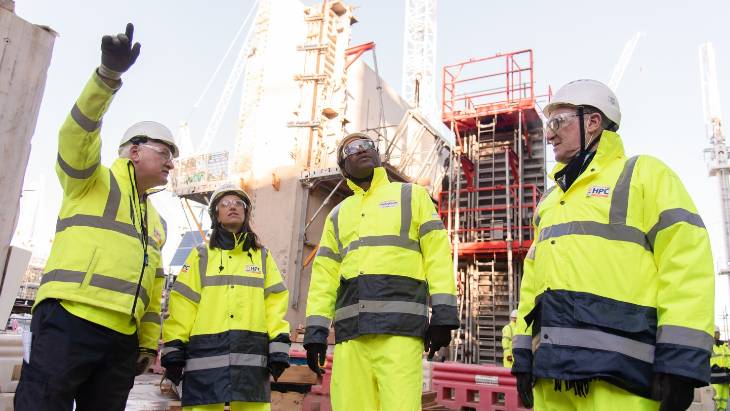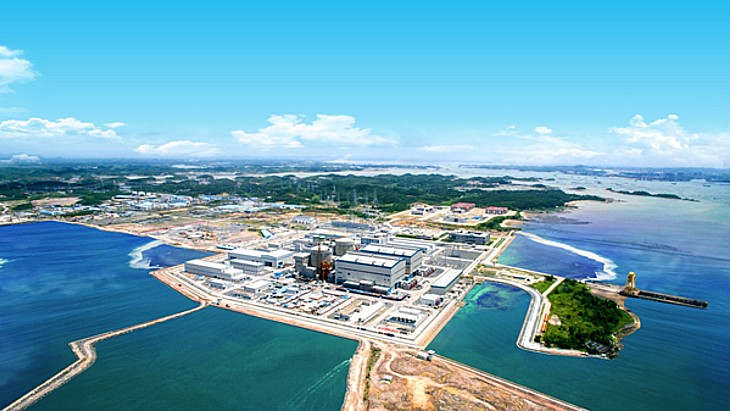His comments came during a visit to the site in south west England where two EPR reactors are being built.
Hinkley Point C is the first new nuclear power station to be built in the UK for more than two decades. Construction began in December 2018 and it should generate its first power in 2026.
“The UK government recognises that large-scale nuclear is the only technology available to provide continuous, low-carbon electricity at scale. In order to strengthen Britain’s energy security and reduce our exposure to volatile global gas prices, we are firmly committed to deploying new nuclear, as seen through the construction of Hinkley Point C,” said Kwarteng.
“It has been remarkable to see how construction work is progressing … new nuclear is not only at the heart of our plans to ensure greater energy independence, but to create high-quality jobs, boost apprenticeships and drive economic growth.”
There have been 850 apprentices trained at the site so far, with a target of reaching 1000 later this year and Stuart Crooks, managing director of Hinkley Point C, said the project was “changing lives for the better” and would be “crucial in the fight against climate change”.
EDF UK’s Chief Executive Simone Rossi noted that the proposed “building of a near-identical power station in Suffolk, Sizewell C, means the UK can continue this powerful legacy”.
However, the ownership structure will be different - French firm EDF is the majority investor in Hinkley C, with China General Nuclear having a 33% stake, but Sizewell C is intended to be majority-owned by British investors, as a result of the legislation currently going through Parliament.
The new financing model explained
Under the existing mechanism to support new nuclear projects - the Contracts for Difference (CfD) scheme - developers have to finance the construction of a nuclear project and only begin receiving revenue when the station starts generating electricity. The CfD approach was used to finance Hinkley Point C, with the developers agreeing to pay the entire cost of constructing the plant, in return for an agreed fixed price for electricity output once the plant is online. However, this approach places the entire construction risk on developers and led to the cancellation of other potential new build projects, such as Hitachi's project at Wylfa Newydd in Wales and Toshiba's at Moorside in Cumbria.
The Department for Business, Energy and Industrial Strategy (BEIS) announced in June 2018 that the government would review the viability of a Regulated Asset Base (RAB) model for new nuclear projects and committed in January 2019 to publishing an assessment of this model by the summer. Under this model a company receives a licence from an economic regulator to charge a regulated price to consumers in exchange for providing the infrastructure in question. Most recently, the RAB model was used to successfully finance the construction and operation of the Thames Tideway Tunnel and Heathrow's Terminal 5. In December 2020, the UK government announced it would begin talks with EDF to enable investment in the planned Sizewell C nuclear power plant project.
The change in financing would reduce the UK’s reliance on overseas developers for financing, BEIS said.






_84504.jpg)
_58447.jpg)





